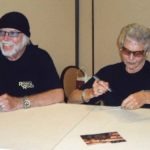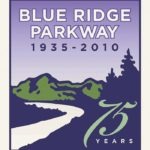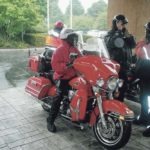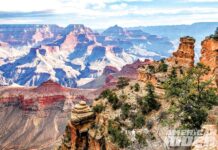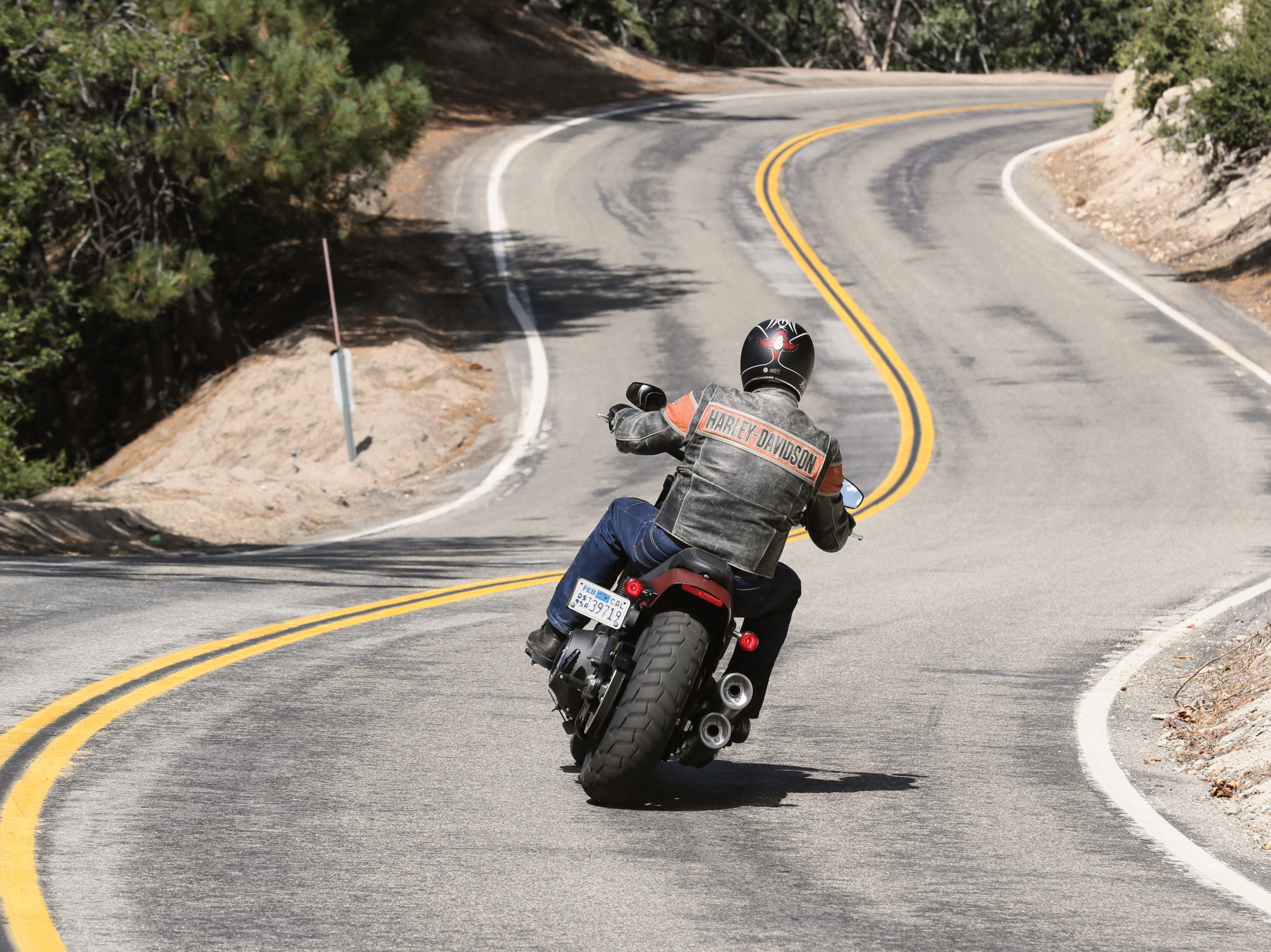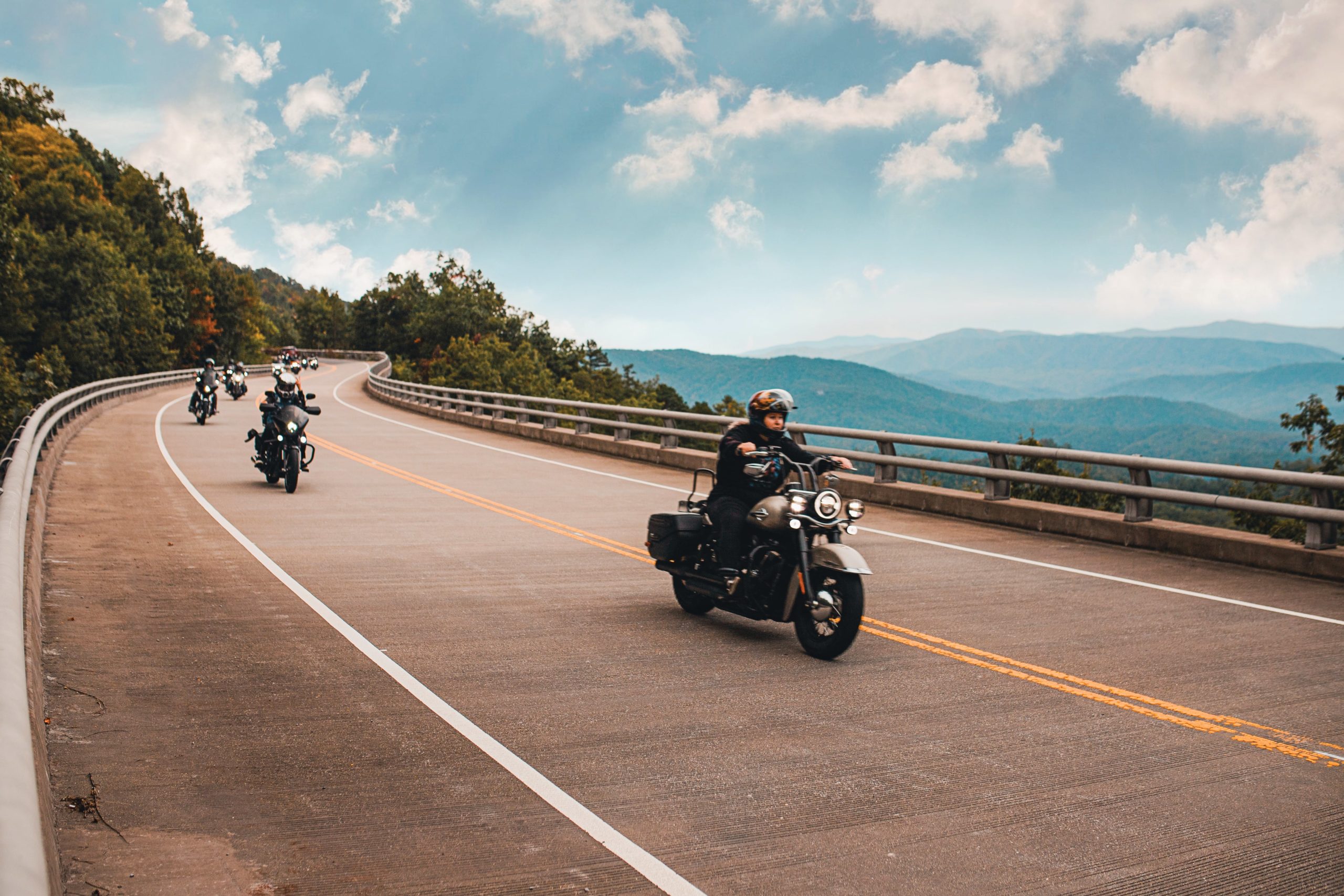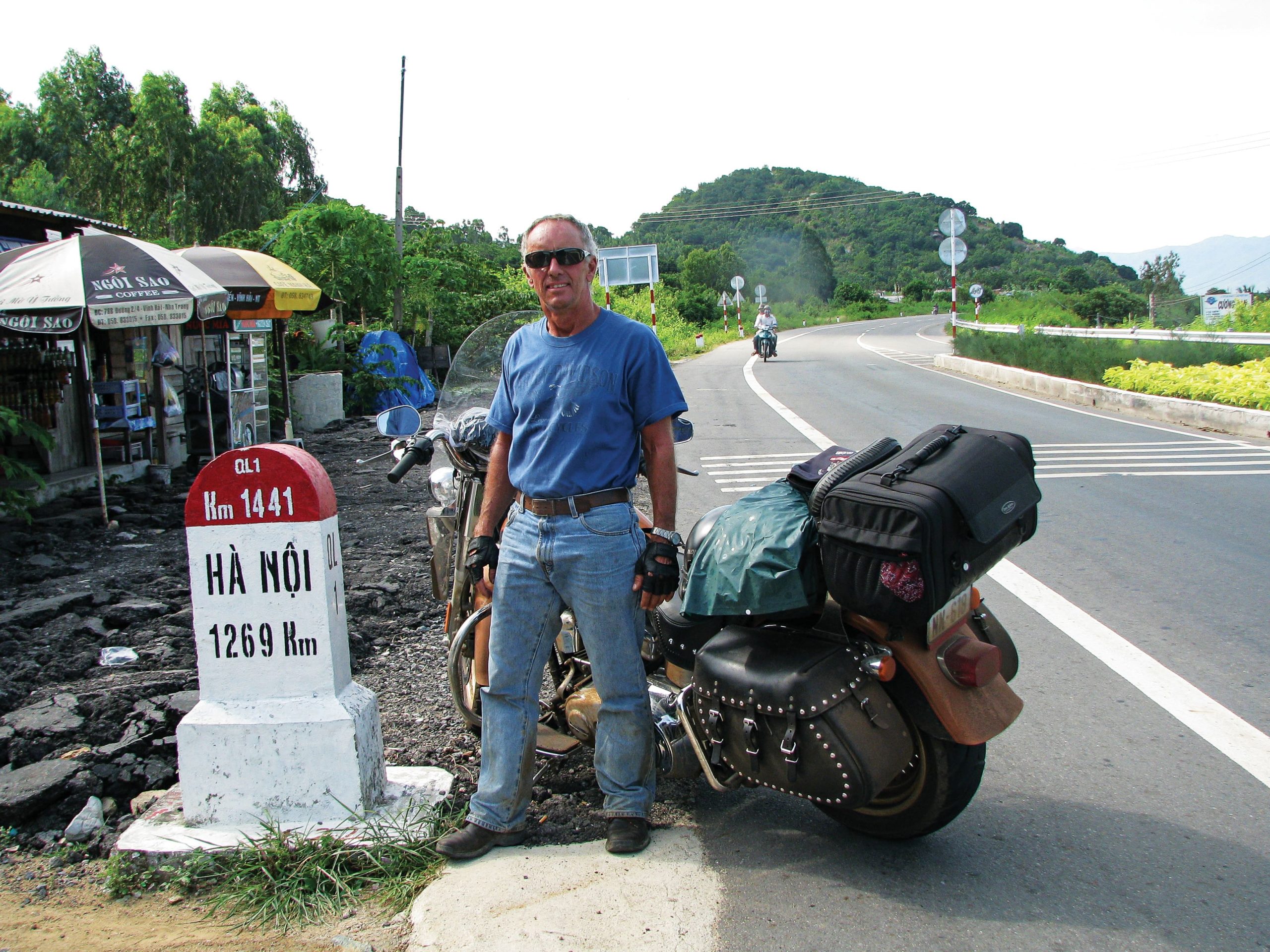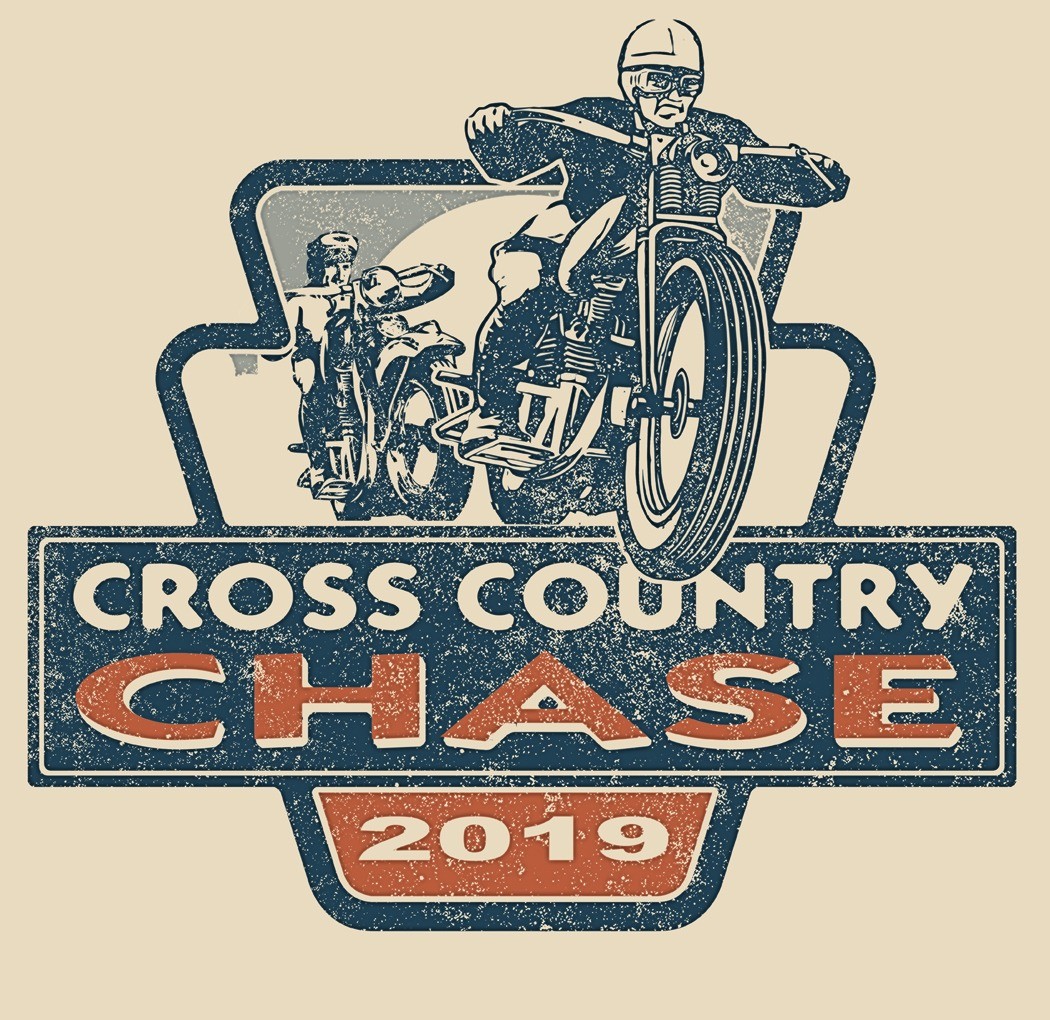Riding the scenic
Ridge runners explore two states
Blue Ridge Parkway, July 12–16—The traffic inched forward, each crowded family car juggling for position as three lanes merged into two and then two into one on the Interstate, somewhere in downstate Pennsylvania. I was heading for the Blue Ridge Parkway as I hoped that all the folks around me weren’t. It was hot! Muggy, steamy heat from the pavement radiated upward. The irritating engine heat was frying my legs. The fiery sun basted my helmet. The oven metaphor was apt.
And then, unexpected relief as a dark cloud blotted out the heavens and buckets of rain began to soak the standstill traffic. My rain suit was in the saddlebags, but not a bridge was in sight. Nothing to do but hope that the next exit would provide cover. My “low-gas” light was on, had been for the last few miles, and it was pushing luck to let it go so far. The exit sign, with words and informational logos, stood out like a beacon. It read, “Gas. Exxon. BP.” Damn! I felt like I was on the reefs. Which of those environmental criminals would I give my money to? Well, a principle’s a principle. I was already wet. I would go on. I wondered how much water a pair of jeans, 38×34, would hold. Eventually, I would get so drenched that I had to dry off before I could take a shower.
In his best-selling Blue Highways, William Least Heat-Moon wrote, “Any traveler who misses the journey misses about all he’s going to get.” The ride along the Blue Ridge Parkway has only that—a journey. There are no quirky oddities, as found on Route 66, with its wigwam hotels, down-home restaurants and legendary provenance. No great discoverers, explorers or pathfinders traversed the Blue Ridge Parkway. Lewis and Clark were far from here. You can’t even make good time on the Parkway; the speed limit is usually 45 mph, sometimes 35 mph. The Blue Ridge Parkway is an Appalachian Trail for motorists, with its trademark being “Ride a while, stop a while.” It’s a sauntering, scenic road that connects two national treasures, the Great Smoky Mountains National Park in North Carolina and Shenandoah National Park in Virginia. In that sense, it forms an elongated national park, a 469-mile-long link with no stoplights. One writer commented that the Blue Ridge Parkway “celebrates every mile of country through which it travels without altering the countryside.” It is evidence, he said, “of how well, how honestly, and how intelligently we can treat the earth if we try.”
National H.O.G. kicked off its 2010 touring season in July with a ride on the Blue Ridge Parkway. Registration was limited to 650 members, all of whom met in Roanoke, Virginia, and fanned out for two days to explore sections of the Parkway. Two days later, they repeated the experience in Asheville, North Carolina, scouting other sections of the venerated road.
It’s rare for H.O.G. to be overshadowed by the location of its rallies. But the Blue Ridge Parkway transcends every organization, every rider, every motorist who follows its winding path. Its exalted history parallels the development of roads in this country. The Parkway was part of the tourism-roads-national parks triangle that dominated the first 30 years of the 20th century. Before 1920, there was only one national park in the East, in Maine, although there were regional parks in several states. In the West, there was an effort to link the national parks through parkways. The construction of these roads blended into the landscape. If desired, a motorist could visit all the parks without leaving national park territory. The Blue Ridge Parkway was part of that dream.
The development of automobiles in the 1920s and 1930s forced states to deal with their roads. National parks captured the imagination of citizens, and they took to the roads to visit sites once only read about in magazines. The middle class was eager to see America, and good roads were necessary to attract tourism. Previously, roads were financed locally and built with convict labor. The results were inadequate. Road building needed President Franklin Roosevelt’s New Deal, and federal involvement in road construction was born. FDR visited the newly built Skyline Drive, and it was suggested that the road be extended to the Great Smoky Mountains. Construction began in 1935.
Oddly, there isn’t much to see on the Blue Ridge Parkway, but there’s a lot to see from it. On a clear day, riders can scan a hundred miles or more and everything in between, with most of it comprising spectacular views of layers of mountains. Foliage dominates, of course, which is why locals often refer to the Parkway as “the Scenic.” The National Park Service owns 1,000 feet on each side of the roadway, so everyone is guaranteed a commercial-free ride. No billboards or roadside dumps are allowed; everything is designed for beauty. Only the most carefully designed roads are allowed to intersect with the Parkway, and there is limited merging traffic. Picnickers are frequent, and there are pull-offs and rest stops that conform to the topography. Scenery and recreation are paramount.
But the Blue Ridge Parkway has its own signature. There are few “Curve Ahead” signs because the entire road is one long coil, from beginning to end. There are not many straight-aways, and the natural tendency of riders to twist the throttle brings unintended challenges in over- and understeering. Still, the Blue Ridge Parkway is a road that brings you through two states, each presenting its own wonderment. If you get off the Parkway, you can explore nature’s phenomena.
My favorite was Grandfather Mountain, a mile-high peak in North Carolina that offered the most challenging ride I’ve had in many years. The road to the top features several switchbacks, or hairpin turns, which, as the word implies, turn back on themselves while ascending a very steep grade. The difficulty is to maintain speed over a two and a half mile-long road while negotiating sharp turns and at the same time fighting gravity’s pull down the mountain. If you’ve ever watched a hill climb, you know that unless the rider keeps the power on, the bike will stop very quickly and fall over. Indeed, before undertaking the climb up Grandfather Mountain, riders were given printed notices from attendants of the National Park Service, cautioning them about the formidable terrain. The fact that the notices were printed was some indication of how often accidents occur.
Most of us dismissed the warning. Hadn’t we ridden thousands of miles? Weren’t we graduates of the Experienced Rider’s Course? None of that prepared us for the ride. As we ascended the mountain, it became apparent that this was no joy ride. It was almost impossible to get out of first gear. The pavement banked and curved and bowed and arched at inopportune moments, and riders dared not stop for fear of falling over.
When we reached the top—and we did eventually reached the top—the peak was shrouded with fog and riders dismounted and walked across a swinging suspension bridge. Note the word “swinging.” It was a mile high and the bridge swayed in the strong winds. For the daring, therewere more heights to scale, and those with rubber soles advanced over the slippery rocks until they triumphantly reached the summit.
And then it started to rain. You could hear passengers exclaim, “No effin’ way am I going back down that effin’ mountain on the back of an effin’ motorcycle.” Or words to that effect. But of course they did.
As bad luck would have it, rain hampered much of H.O.G.’s weeklong tour of the Blue Ridge Parkway, forcing registrants to abbreviate their explorations. One member, Jeff Simmonds, from Greene, New York, ducked under a hotel canopy to change into his rain suit. “We take what we get, we deal with what we’re offered,” said Jeff, philosophically “It’s all part of the experience, isn’t it?” Jeff got into long-distance touring, he said, through H.O.G. promotion. It sounded like fun, so he came.
The rain didn’t hobble Willie G. Davidson, who with his wife Nancy rode down from Milwaukee with H.O.G. executive Joe Dowd to participate in the festivities. Willie and Nancy, probably the most photographed couple in motorcycle history, mingled daily with the troops, freely dispensing autographs and showering praise and encouragement on the members. “H.O.G. members know more about America’s roads than do the mapmakers,” he said. Willie and Nancy are frequent participants in H.O.G. rallies, and they are the favorites among Harley’s personalities.
H.O.G. has recently undergone some reorganization. The new director of H.O.G. and consumer events is Kris Schoonover, who is 40 years old and has worked for Harley-Davidson since 1992. He’s never had another job. In a brief interview, Schoony (as he’s referred to) said that H.O.G. would continue to pack as much value into the membership as is possible. As an example, he pointed to partnerships with AT&T and Best Western that benefit members. Schoony spoke of helping members create “their own adventures.” H.O.G. is very good at listening to members, which is why H.O.G. managers are always at national events. One such “listening post” was letting registrants ride the Parkway with H.O.G. managers and executives. You find out a lot about people when you ride with them.
H.O.G. will soon lose the very popular southeastern regional manager Arnie Beaman, who is retiring to devote time to sailing. Arnie has been in motorcycling for 44 years and with Harley-Davidson for 28 years. What lessons does Arnie take with him? “H.O.G. members taught me a lot,” Beaman said. “You know the image of the guy in the car looking at bikes and saying, ‘One day I’m going to get me one’? Well, they don’t. H.O.G. members are grabbing their dreams, H.O.G. members are out there, riding, enjoying life. Everyone should be so dedicated.” Arnie recently obtained a captain’s license, so he can marry couples at sea. He’ll be missed.
At the end of Blue Highways, Least Heat-Moon wrote, “Our destination is never a place but rather a new way of looking at things.” Like Thoreau, he believed that “travelers must be born again on the road.” I met bikers who have ridden the Blue Ridge Parkway a dozen times or more. Each summer they ride a while, stop a while. Each year they ride and have fun. To use the Blue Ridge Parkway is to celebrate it. It is a special road, unique in American history. No one should pass this way without experiencing its grandeur.



